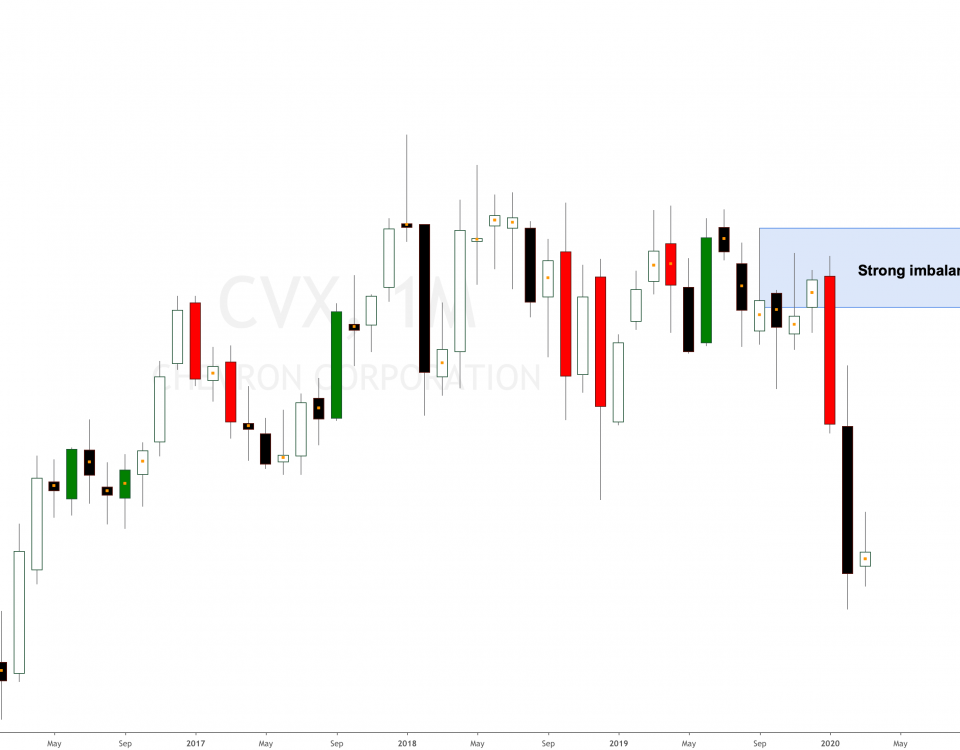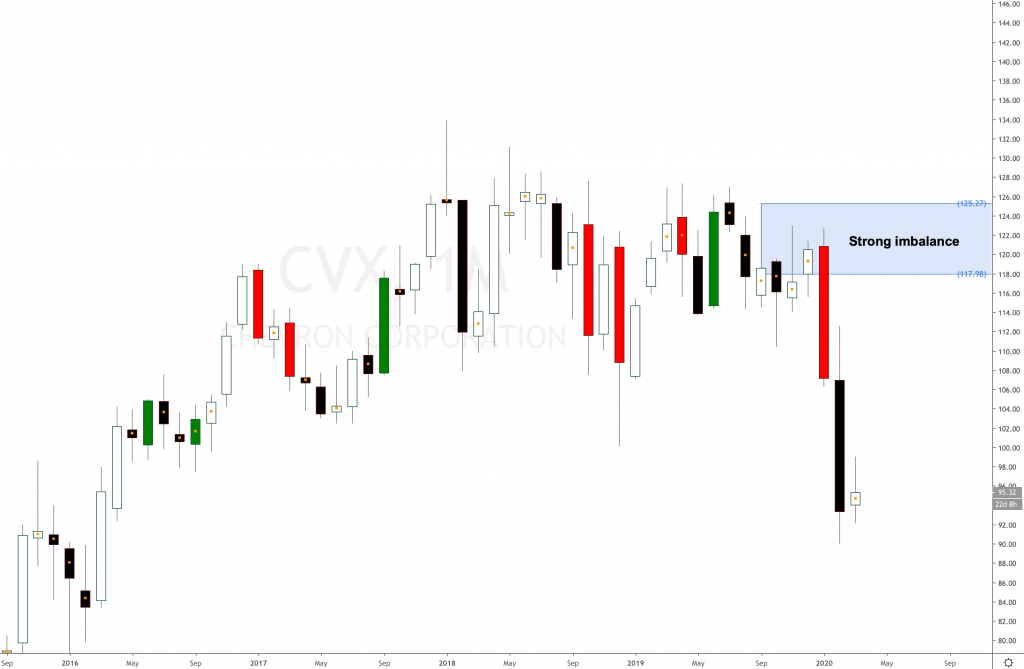9 Mar 2020

Chevron Corporation, through its subsidiaries, engages in integrated energy, chemicals, and petroleum operations worldwide. The company operates in two segments, Upstream and Downstream. The Upstream segment is involved in the exploration, development, and production of crude oil and natural gas; processing, liquefaction, transportation, and regasification associated with liquefied natural gas; transportation of crude oil through pipelines.
Chevron stock NYSE scenario
Doing a monthly timeframe supply and demand analysis on Chevron Corporation (CVX) oil-related stock, we can see a very strong monthly imbalance of supply around $118 per share. The strength of that bearish impulse is quite strong, worth trading if the price retraces to it, and the trend is still bearish for Chevron Corporation.
One of the most important features of an imbalance is the strength of the leg out. The one on Chevron Corporation, around $118, is pretty strong. You can see the imbalance in the monthly timeframe attached right underneath.
Chevron stock price today chart

I’ve read that some investors were thinking of buying shares of Chevron (CVX), Exxon (XOM) and Royal Dutch Shell (RDS.A). Well, as supply and demand traders, it’s very clear that we should not be thinking of buying shares of these oil-related stocks for a very clear reason. New supply imbalances are created in a downtrend, and demand is eliminated. Why should we buy if a new supply is being created and the stock is dropping like a rock, following suit by the highly correlated prices of Crude Oil (CL)? It makes no sense, which is why most traders fail to understand and accept it.
As supply and demand traders, we should not care much if Oil plunges after failing to reach a deal or the existing oil wars and fights between Opec, Russia, Arab countries and the US. Oil is trading lower after Saudi Arabia slashed crude oil prices. Still, if we look at Royal Dutch Shell’s monthly timeframe and other oil-related stocks worldwide, we will see that it was the most likely direction the oil-related stock could move since we had a weekly supply in control and a clear downtrend and bearish bias.
CVX stock forecast 2020 video
Remember that a single timeframe is not enough to make a trading decision. You must put the new imbalances into context and only trade them if a multiple timeframe analysis has been done following supply and demand rules.
Chevron CVX Stock price action analysis
This is the kind of price action technical analysis you will learn in our trading community. You will learn how to locate new supply and demand imbalances and trade without using any indicators, no news, no fundamental analysis, no earnings announcements, no volume or VSA analysis. Just supply and demand imbalances.
Trading supply and demand imbalances are ideal for beginners and those with full or half-time jobs. You won’t need to stay in front of the computer all day long trying to move price action with your mind.
Chevron’s stock price history
As supply and demand traders, we do not need to pay attention to the news, fundamentals or any earnings reports. Once a big timeframe imbalance has gained control, earnings do just the opposite and react strongly to those imbalances. Why do you see positive earnings and then the underlying stock drops like a rock, or a negative earnings announcement and the stock rallies like a rocket out of control? You are probably missing the fact that there are big imbalances in gaining control.
You should not worry about fundamentals or earnings announcements unless you are doing very short-term trading and scalping.
You can use these imbalances to plan your trades in lower timeframes. Trading is just waiting for the right trigger points and scenarios to present themselves, this game has got a name, and it’s called the waiting game. We need to patiently wait for the correct scenarios and setups to happen and wait for the price to pullback or dip into the price levels we want to trade, in our case these price levels are made of supply and demand imbalances.









